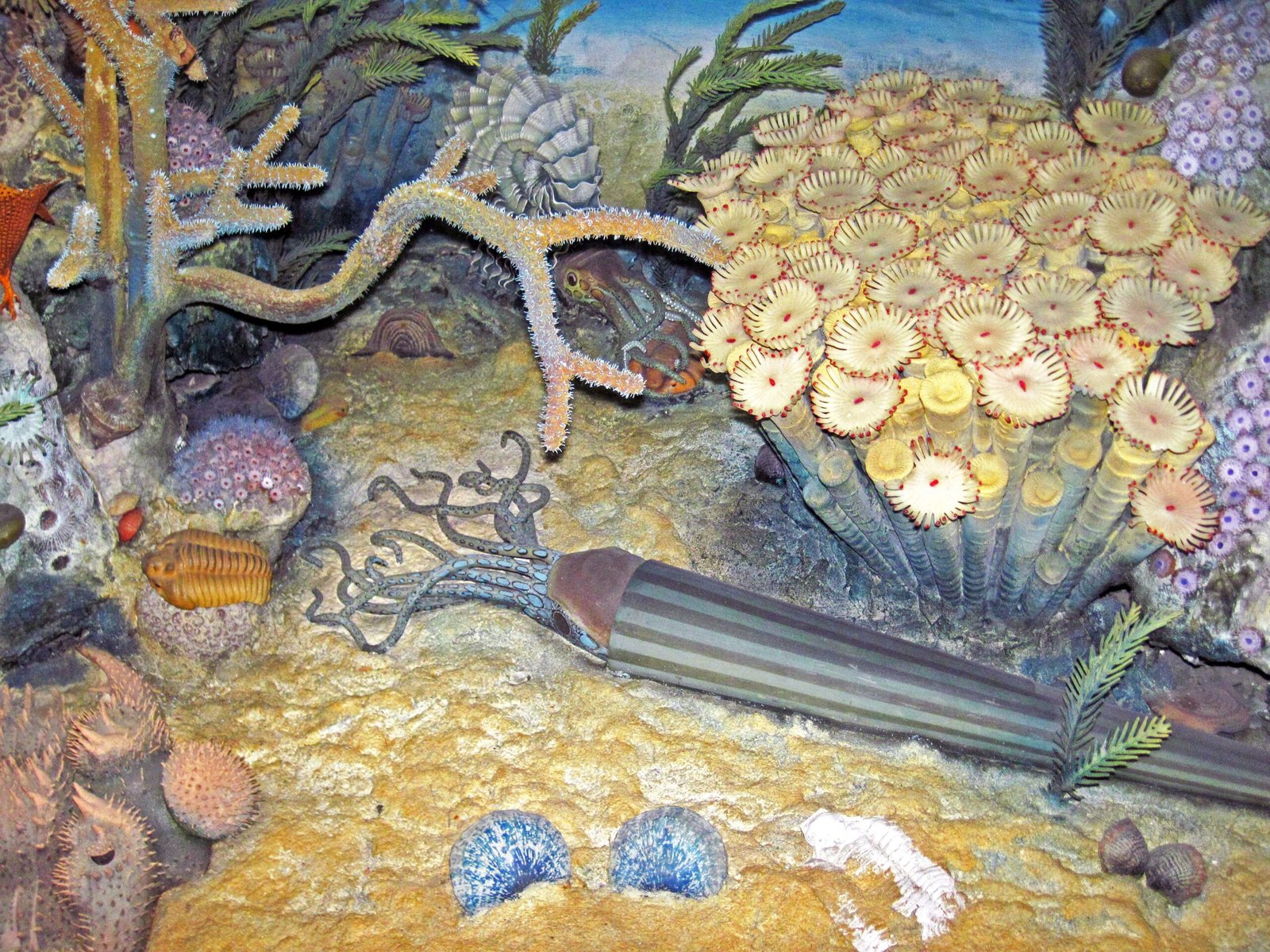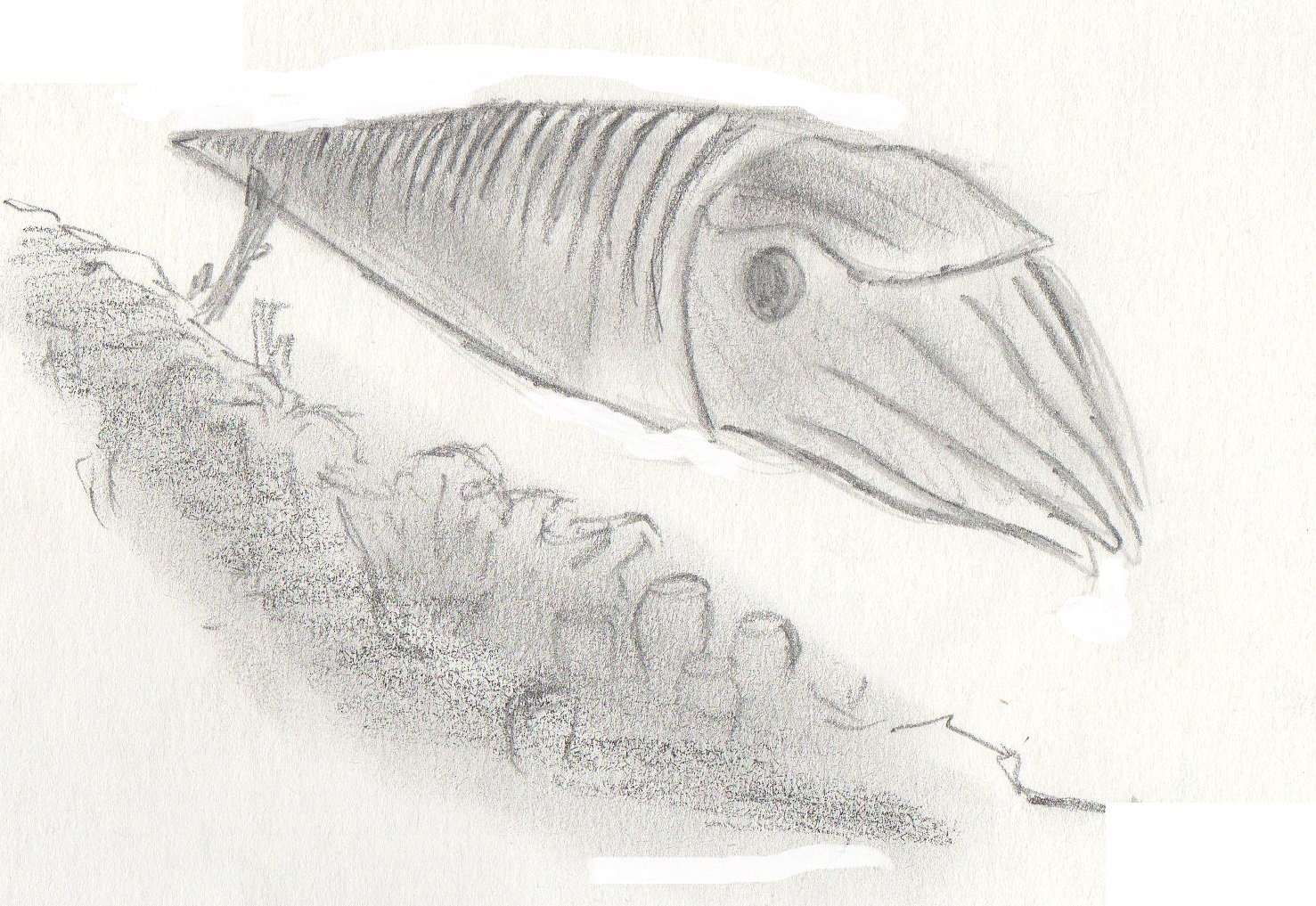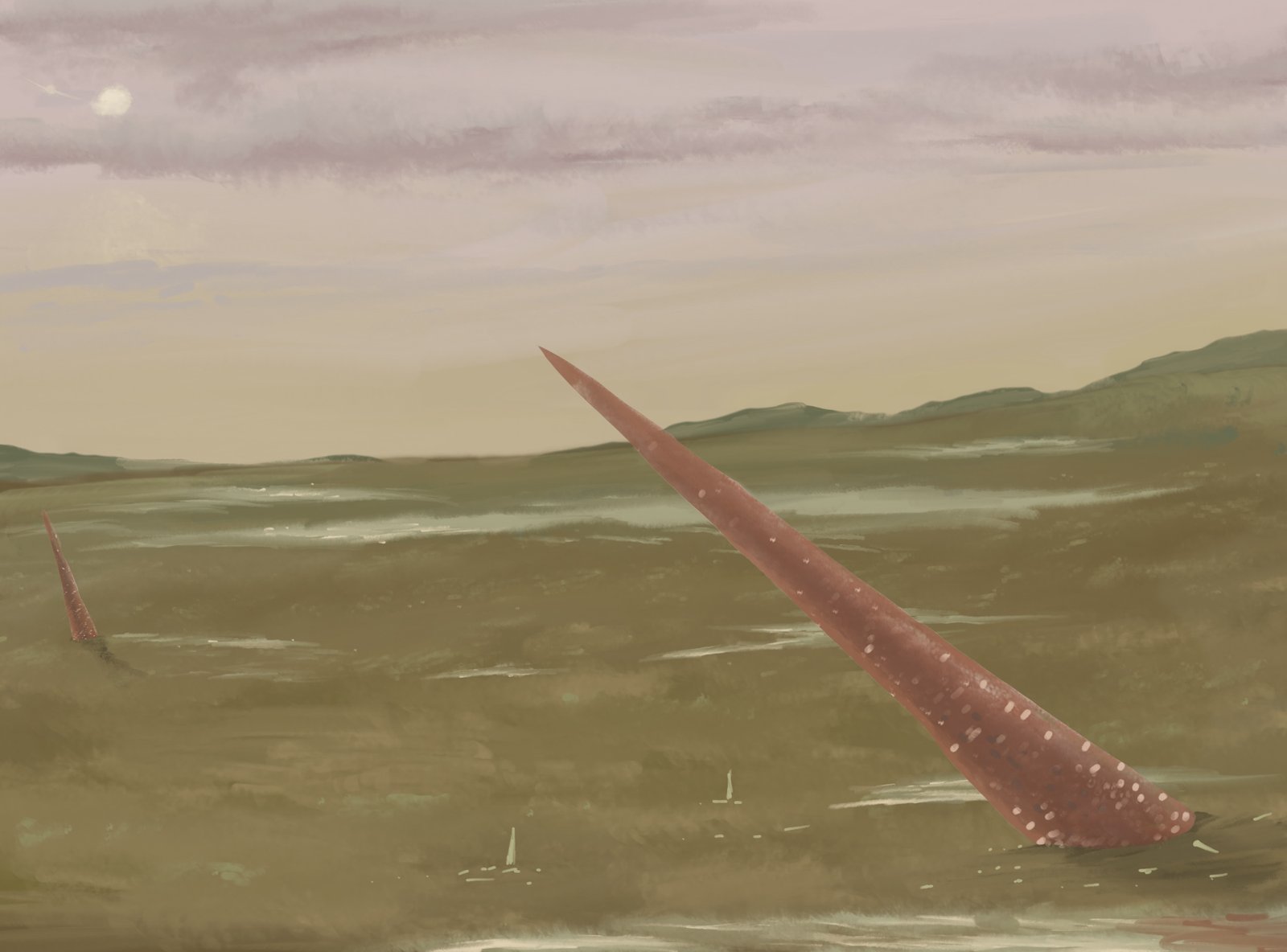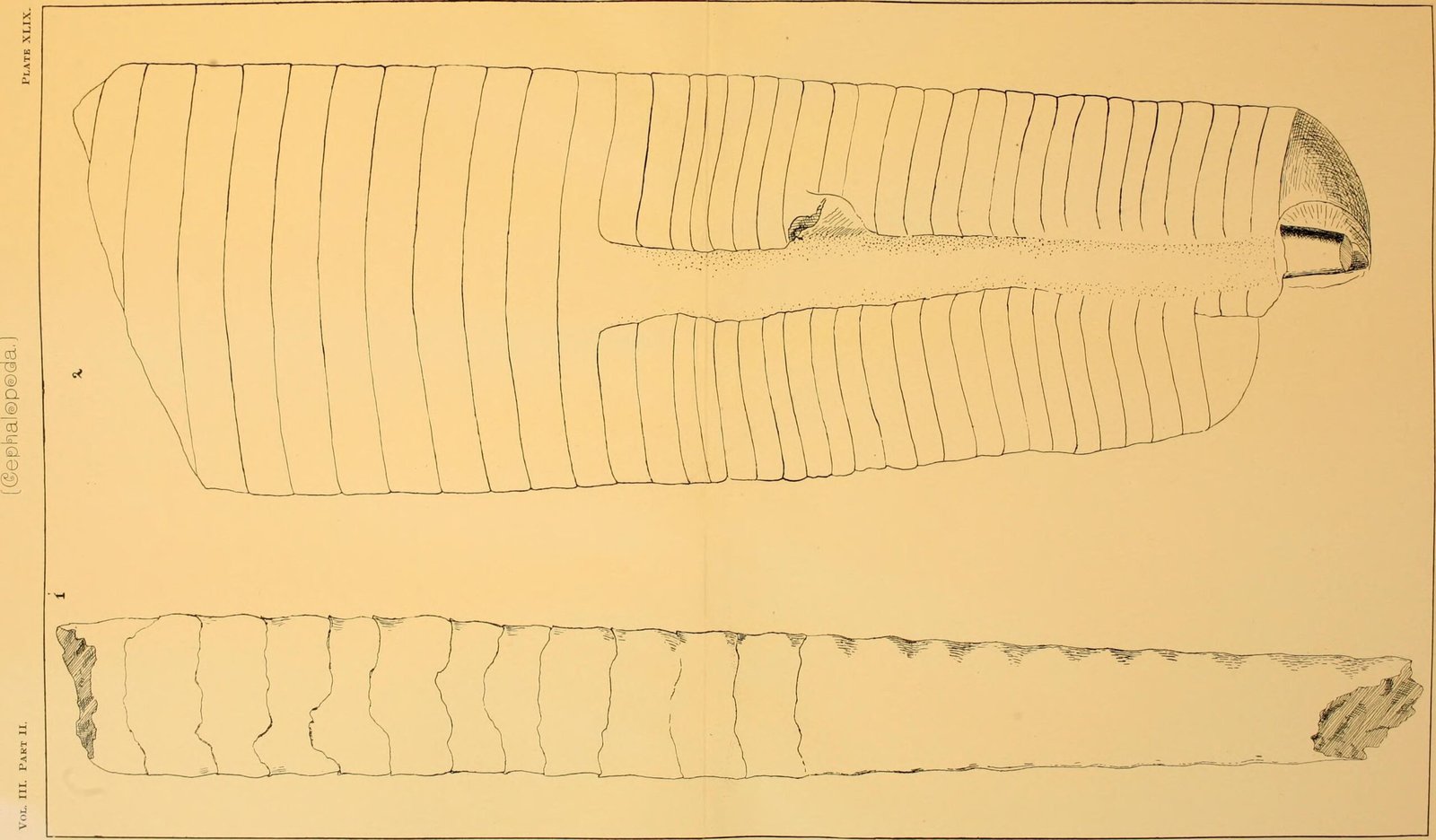Imagine standing on the edge of a primordial sea, with waves crashing against a rocky shore under a sky untouched by birds or flowers. Suddenly, a shadow glides beneath the water—bigger than any creature you’ve ever seen, its long, conical shell glimmering in the sunlight. This isn’t a scene from science fiction but a glimpse into Earth’s distant past, when Cameroceras, a monstrous cephalopod, ruled the oceans. Long before dinosaurs even dreamed of walking the land, Cameroceras inspired awe and fear, dominating ancient seas as a true titan. Its story is one of survival, evolution, and the raw power of nature, inviting us to dive deep into a forgotten world where giants roamed and the rules were written by those who could adapt—or devour.
Unveiling a Prehistoric Giant

Cameroceras might not be a household name, but its legacy is monumental. This ancient cephalopod lived around 470 million years ago during the Ordovician period, a time when complex life was just beginning to flourish in the oceans. With an estimated length of up to 30 feet—longer than a city bus—Cameroceras dwarfed almost every other animal of its era. Its massive, straight shell made it unmistakable, slicing through the water like a living spear. Encountering such a creature would have been both mesmerizing and terrifying, a reminder that the world was once filled with predators beyond our wildest imagination.
A Shell Like No Other

The defining feature of Cameroceras was its enormous, conical shell, known as an orthocone. This shell wasn’t just for show; it provided buoyancy, allowing the animal to rise or sink as it pleased. The shell was divided into chambers, each filled with gas or liquid, controlled by a tube called the siphuncle. This ingenious adaptation made Cameroceras a master navigator of the ancient seas, able to hover motionless or launch itself at prey with shocking speed. Think of it as the submarine of its time—powerful, precise, and nearly unstoppable.
The Anatomy of a Predator

Cameroceras wasn’t just a floating shell; it was a highly specialized hunter. Emerging from the opening of its shell were a set of long, flexible tentacles, equipped with powerful suckers or hooks. These arms helped Cameroceras snatch unsuspecting prey, dragging them into a sharp, beak-like mouth. Its large eyes, likely among the most advanced of its time, gave it excellent vision to spot movement in murky waters. Every aspect of Cameroceras’ body screamed efficiency, making it the ultimate apex predator in its watery domain.
What Did Cameroceras Eat?

With its formidable size and weaponry, Cameroceras had its pick of the ocean buffet. Its diet likely included trilobites, smaller cephalopods, and even early armored fish. Using its tentacles, Cameroceras could quickly seize struggling animals, crush their shells, and consume them with its powerful jaws. Paleontologists believe it might have even preyed upon other large invertebrates, making it a terror to anything within reach. Each meal was a reminder of the harsh and unforgiving world of the Ordovician seas.
A World Before Dinosaurs
The reign of Cameroceras predates the dinosaurs by over 200 million years. This was an era when most life existed in the oceans, and land was barren, rocky, and inhospitable. Forests, insects, and flowering plants had yet to evolve. In this alien landscape, Cameroceras stood out as a symbol of nature’s creativity and power. The ancient seas teemed with life, but few could rival the dominance of this cephalopod titan.
How Did Cameroceras Move?
Despite its imposing shell, Cameroceras was far from sluggish. Like modern squids and octopuses, it likely used jet propulsion to move—drawing water into its mantle cavity and forcefully expelling it through a funnel. This allowed for rapid bursts of speed, perfect for ambushing prey or escaping threats. Its streamlined shell helped reduce drag, making it surprisingly agile for such a large animal. Watching Cameroceras glide through the water would have been like witnessing a ghostly submarine on the hunt.
Ancient Relatives and Modern Descendants
Cameroceras belonged to a group called orthoconic cephalopods, distant relatives of today’s squids, octopuses, and cuttlefish. While Cameroceras and its kin ruled the ancient seas, most modern cephalopods have lost their external shells, opting for speed and flexibility. The chambered nautilus, with its beautiful spiral shell, is one of the few living reminders of this once-dominant lineage. Studying Cameroceras helps us understand how these fascinating animals evolved and adapted over millions of years.
Fossil Discoveries and Scientific Mysteries

Cameroceras fossils have been unearthed in North America, Europe, and parts of Asia, providing tantalizing glimpses into its ancient world. Yet, much about this cephalopod remains mysterious. Fossils rarely preserve soft tissues, so scientists often rely on fragments of shell and indirect evidence to piece together its story. Each new discovery brings more questions: How did it hunt? How did it reproduce? What finally led to its extinction? These mysteries fuel the imagination and drive ongoing research.
The End of an Era

Like many giants of the past, Cameroceras eventually disappeared. The causes remain unclear—changes in sea levels, climate shifts, or competition from emerging predators could all have played a role. As the Ordovician period gave way to new ages, other marine animals rose to prominence, and the legacy of Cameroceras faded into the fossil record. Yet, its story reminds us of the ever-changing nature of life on Earth and the incredible creatures that came before us.
Why Cameroceras Still Captivates Us
There’s something undeniably thrilling about imagining a creature as massive and powerful as Cameroceras gliding through ancient seas. It speaks to our curiosity about the unknown, our fascination with monsters, and the endless possibilities of evolution. Scientists and artists alike continue to be inspired by its story, weaving tales of mystery and adventure that connect us to the distant past. Cameroceras is a testament to the wonders that once existed—and a reminder that there is always more to discover.
Legacy Beneath the Waves
Cameroceras may be long gone, but its influence lingers in the depths of our imagination and the pages of scientific discovery. Its fossils tell a story of triumph, adaptation, and the relentless drive to survive in a world both beautiful and brutal. As we explore the oceans and study the creatures that live there today, we are always looking backward—even as we look ahead—wondering what other titans might be waiting to reveal their secrets. What else lies hidden beneath the waves, waiting for us to discover?



